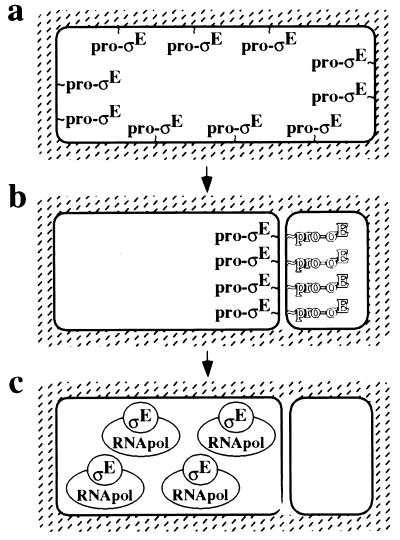FIG. 5.
The mother cell-specific transcription factor ςE displays three patterns of subcellular localization. (a) In the predivisional sporangium, the transcriptionally inactive proprotein precursor, pro-ςE, is associated with the cytoplasmic membrane. (b) Following polar division, pro-ςE preferentially accumulates at the polar septum and possibly only on the mother cell face of the septum (as indicated by the shadowing of pro-ςE in the forespore) in a process that depends on the SpoIIIE protein (see Discussion). Finally, pro-ςE is converted to mature ςE via the components of the intercellular signal transduction pathway (not shown). (c) As a result, mature ςE is released from the septum into the cytoplasm of the mother cell where it associates with core RNA polymerase (RNApol) and directs specific gene transcription.

